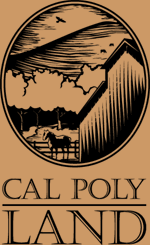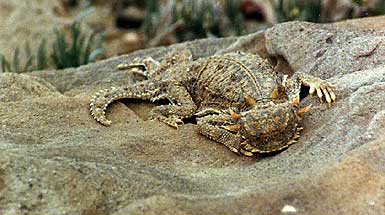|
REPTILES AND AMPHIBIANS Horned Lizard |
|
|
|
|
|
The horned lizard (Phrynosoma) is a member of the Phrynosomatidae family of lizards. This lizard is most commonly referred to as the “horny toad,” the “horned toad,” and the “horned frog”. The nickname became popular with the lizard because of the rounded body and flat snout that appears similar to a toad or a frog. The lizard doesn't actually have any horns, only small modified spiny scales that easily resemble horns. The horned lizard usually lives in hot, dry, sandy environments like the canyon or serpentine habitats. This makes it easy for the lizard to blend into the natural surrounding of San Luis Obispo through camouflage. Camouflage helps protect the lizard from predators and serves as an important part of attacking prey. The horned lizard has many other means to avoid predation. Some horned lizards are able to puff up their body, causing the scales to protrude which makes it difficult for the predator to swallow. Some species of the horned lizard are also able to squirt a direct stream of blood through their eyes, which confuses predators. The blood can be very foul-tasting when it mixes with noxious biochemicals, which can affect the local wildlife population including bobcats, coyotes, wolves, and domestic dogs and cats. This defense mechanism protects the lizard from the animals that try to attack. The lizard feed mostly on ground-dwelling slow-moving insects, ants and spiders. Harvester ants, which are native to California , make up 70% of the lizard's diet and it consumes them with its long sticky tongue, similar to that of a toad. The horned lizard population has slowly started to decline due to the spread of foreign South American ants and the overuse of pesticides.
|


